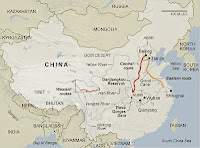Sustainability is Dead -
Long Live Sustainability

- an SWM THiNKTANK article This year (2012) its 20 years since the Rio Earth Summit. Accordingly, its time to critically reflect on what has been achieved, what is pending, what are the success stories. Overall it can certainly be acknowledged that the awareness of the post-modern society regarding e.g. limited natural (but also social) resources, climate change, the inter-dependencies between economy, environment and human society has increased significantly. In terms of scientific progress a number of fundamental developments have been realised (e.g. the development of appropriate life cycle assessment approaches/impact assessment methods, etc.). Various economic developments, for example streamlined supply-chains (or supply webs), diversification and outsourcing, life cycle thinking, etc. have been implemented and/or refined. Technical improvements, e.g. profitable recovery of precious and/or rare materials, intelligent power supply systems, smart household appliances have assist


